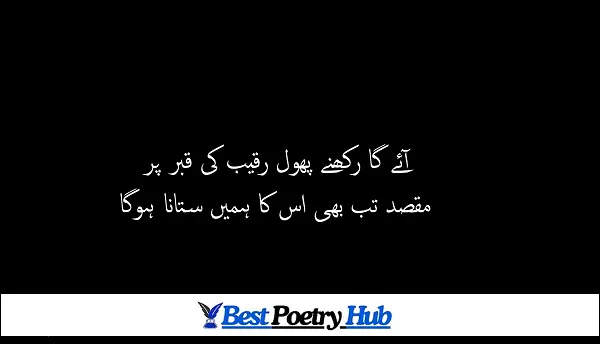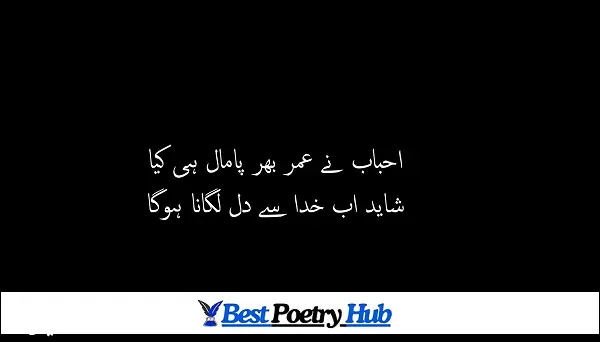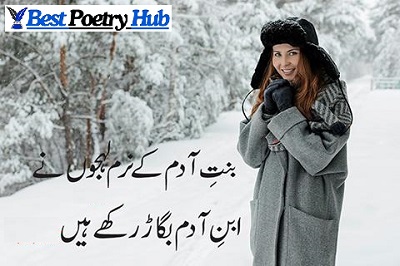A Glimpse into Elegance and Depth The Essence of Two-Line Urdu Poetry
2 Line Famous Urdu Poetry, with its rich tradition spanning centuries, is renowned for its eloquence, depth of emotion, and concise yet profound expression. Among its most celebrated forms is the two-line poetry, known as “sher” or “couplet.”
Ishq Ab To Kuch Reham Ki Chhaoun Dy
Tarap Raha Hy Barson Sy Yeh Insaan Janaa

Tassawar Kroun Hijar Ki Raatain Taha Guzarne Ko
Ho Jate Hain Khtaa Mere Ausaan Janaa
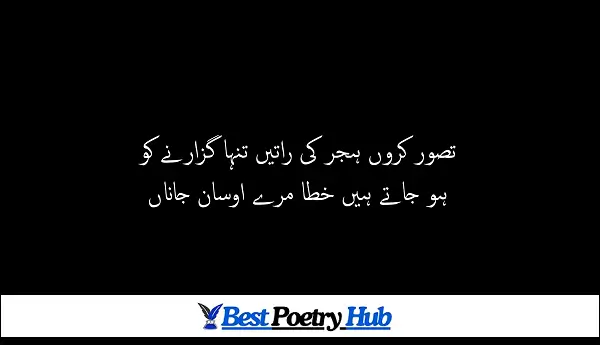
Origin and Evolution
The roots of Urdu poetry can be traced back to the 13th century in the Indian subcontinent, evolving from Persian influences combined with local languages.
Ashaar Khyaal Parhta Bhlaa Koun Hy
Phir Bhi Hota Hy Dil Ko Itminaan Janaa

Sohni Kia Majnoo Kia Qais Kia Khyaal
Ishq Harr Kisi Ka Tamasha Bnaa Dete Ho

Structure and Form
A sher consists of two lines, known as “misra-e-oola” (first line) and “misra-e-saani” (second line), often connected by rhyme and meter. The challenge lies in crafting a sher that balances lyrical beauty with thematic depth, making it a popular form among poets aiming to evoke intense emotions or convey complex ideas succinctly.
MaNSOOR ko Sooli Chrhaa Dete Ho
Zamane Ko Zimmadaar Thehra Dete Ho

Kuch Iss Qadar Sitam Mian Maharat Hy
Khanjar Chlaate Ho Aur Dawaa Dete Ho
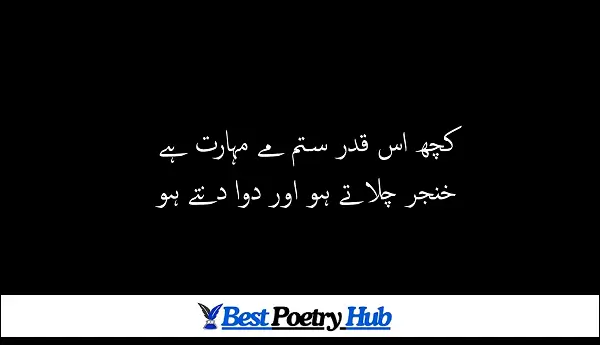
Themes and Variations
Two-line Urdu poetry encompasses a wide range of themes, reflecting the human experience in its entirety:
Love and Romance: Perhaps the most celebrated theme, love in Urdu poetry is depicted in myriad shades—from passionate longing to heartbreak and nostalgia.
Example: “وہ لوگ بھی کیا یاد کریں گے، جو دل کو بے قرار چھوڑ گئے”
Nature and Beauty: Poets often draw inspiration from the natural world, using vivid imagery to capture the beauty of landscapes, seasons, and celestial phenomena.
Example: “رات گوہری تھی چاندنی بکھر گئی”
Philosophy and Reflection: Many sher reflect on existential questions, mortality, and the fleeting nature of life, offering poignant insights into the human condition.
Example: “زندگی کے تماشے بہت ہیں، لوگ بہت یاد آتے ہیں”
Pamaal Kiye Mehh Khaane Sy Nikaalte Ho
Abb Peechy Keun Saaqi Ko Sadaa Dete Ho
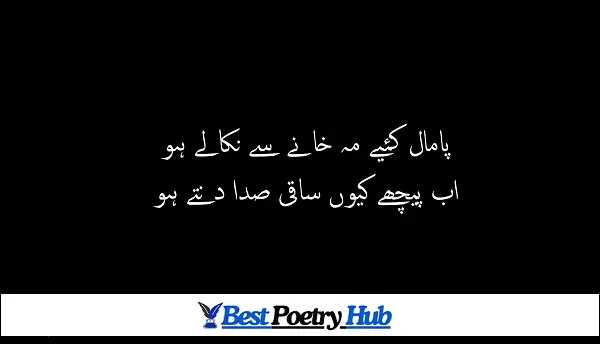
Umar Draaz Ki Duaa Dete Ho
Mere Zakhmon Ko Keun Hawa Dete Ho
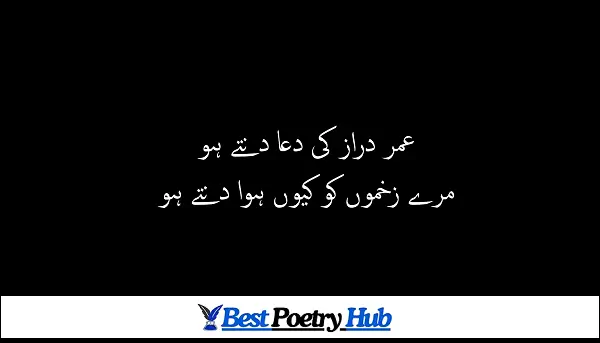
Prominent Poets and Their Influence
The realm of two-line Urdu poetry has been graced by legendary poets whose works continue to resonate with readers across generations:
Mirza Ghalib: Known for his mastery of language and profound introspection, Ghalib’s sher are celebrated for their emotional intensity and philosophical musings.
Example: “دل ہی تو ہے نہ سنگ و خشت درد سے بھر نہ آئے کیوں”
Allama Iqbal: Revered as the poet-philosopher of the East, Iqbal’s sher often blend spirituality with patriotism and social consciousness.
Example: “خدی کو کر بلند اتنا کہ ہر تقدیر سے پہلے، خدا بندے سے خود پوچھے، بتا، تیری رضا کیا ہے”
Faiz Ahmed Faiz: A poet of resilience and hope, Faiz’s sher reflect a deep commitment to social justice and human rights.
Example: “بول کے لب آزاد ہیں تیرے، بول زبان اب تک تیری ہے”
Ab To Khwaab Main Bhi Thukraa Dete Ho
Na Jaane Kis Jurm Ki Sazaa Dete Ho
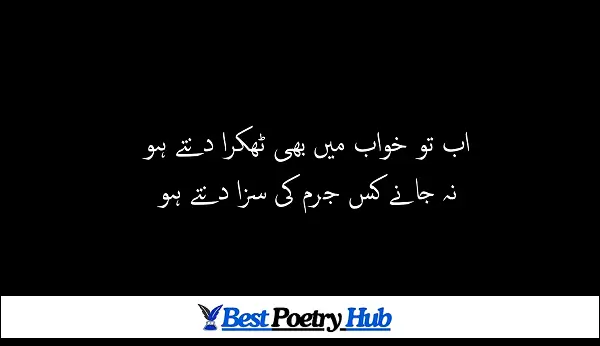
Khyaal Yaar Ki Chaahat Kare Kab Tak Khyaal
Iss Qadar Ruswaaye Zamana Hoga . . . . .
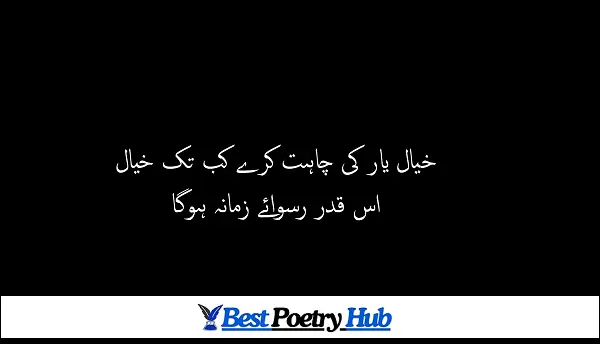
Jab Guzre Ga Unke Kooche Sy
Qaatil Ko Besaakhta Baahir Aana Hoga
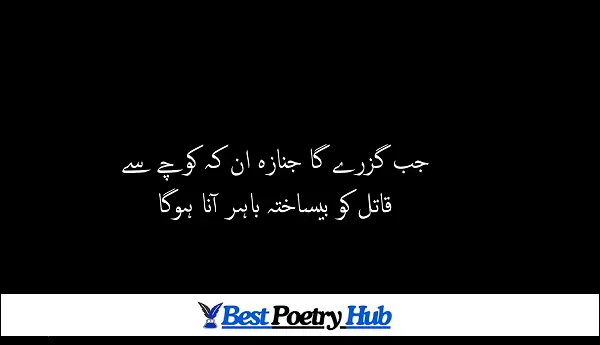
Impact and Appreciation Today
In contemporary times, the popularity of two-line Urdu poetry persists, fueled by social media platforms where enthusiasts share sher and discuss their meanings.
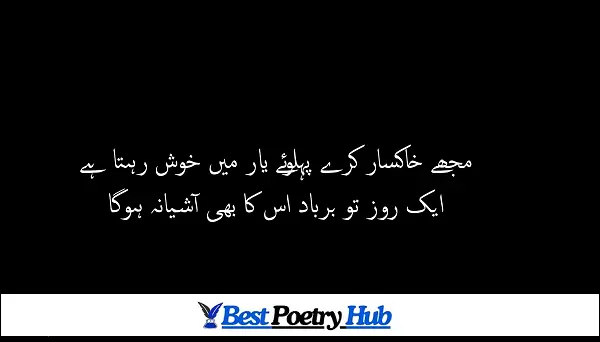
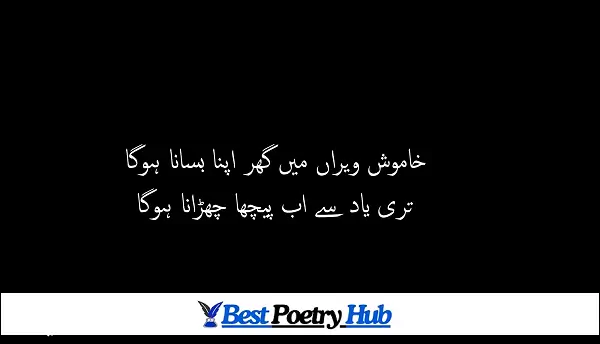


Conclusion
Two-line Urdu poetry, with its elegance and depth, continues to captivate hearts and minds worldwide. Whether exploring themes of love, nature, or philosophy, each sher offers a glimpse into the rich tapestry of emotions and ideas that define the human experience.

